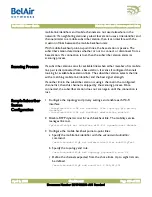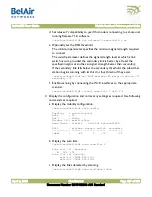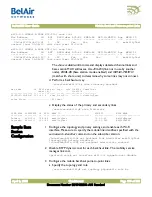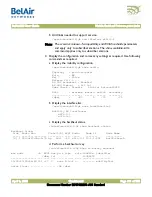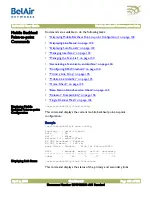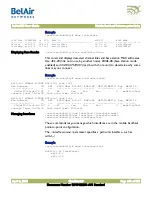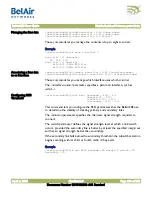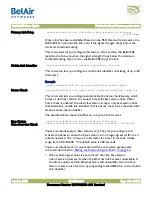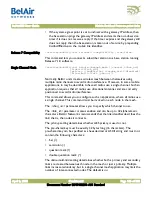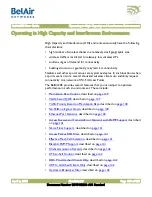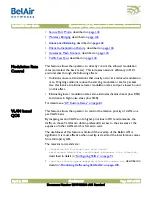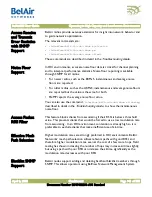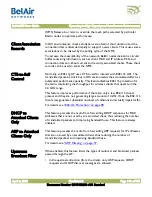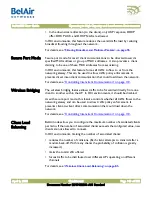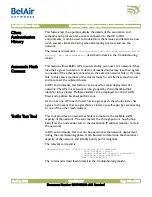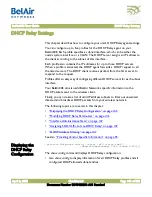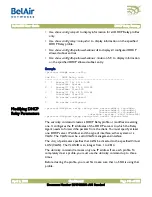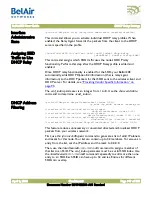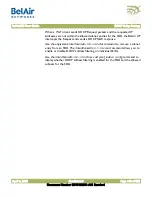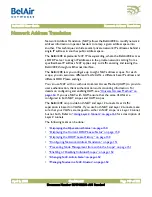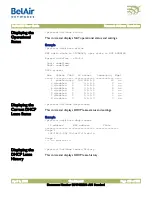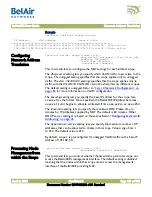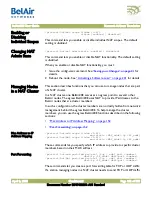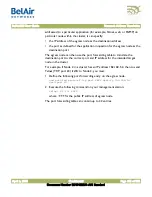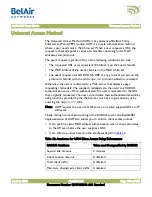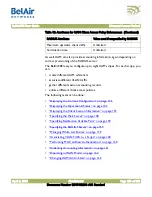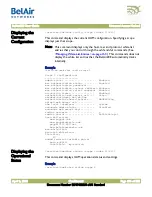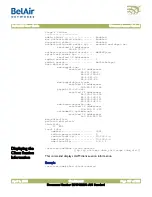
BelAir20E User Guide
Operating in High Capacity and Interference Environments
April 2, 2012
Confidential
Document Number BDTM02201-A01 Standard
(NMS) Release 6 or later to override the mesh paths selected by particular
BelAir nodes to optimize performance.
Client Association
Records
In HCI environments, client associations are often of short duration and the
connection data is discarded rapidly to support newer clients. This causes some
associations to be missed by the polling cycle of the NMS.
To increase the measurability of the network, BelAir nodes maintain a circular
buffer containing information, such as client MAC and IP address, RSSI, and
connection duration, about current and recently associated clients. These client
records can be used to assist the NMS.
CTS-to-Self
Control
Normally, an 802.11g AP uses CTS-to-self to interact with 802.11b APs. The
transmitted packet is small, but in HCI environments the accumulated effect is a
substantial performance penalty. This feature disables 802.11b protection for
the radio, maximizing the throughput for wireless clients that operate in the
2.4 GHz range.
This feature improves performance if there are only a few 802.11b clients
present and they are not generating large amounts of traffic. If not, the 802.11b
clients may generate substantial numbers of collisions and actually impair traffic.
For details, see
“802.11b Protection” on page 98
DHCP to
Attached Clients
Only
This feature prevents the radio from forwarding DHCP responses for MAC
addresses that are not used by an associated client, thus reducing the number
of transmitted packets and improving bandwidth use. This feature is always
enabled.
ARP to Attached
Clients Only
This feature prevents the radio from forwarding ARP requests for IP addresses
that are not used by an associated client, thus reducing the number of
transmitted packets and improving bandwidth use.
For details, see
.
Upstream
Broadcast Filter
When enabled, this feature limits the types of multicast and broadcast packets
passed through the AP:
• In the upstream direction (from the client), only ARP requests, DHCP
requests and DHCP discover messages are allowed.

